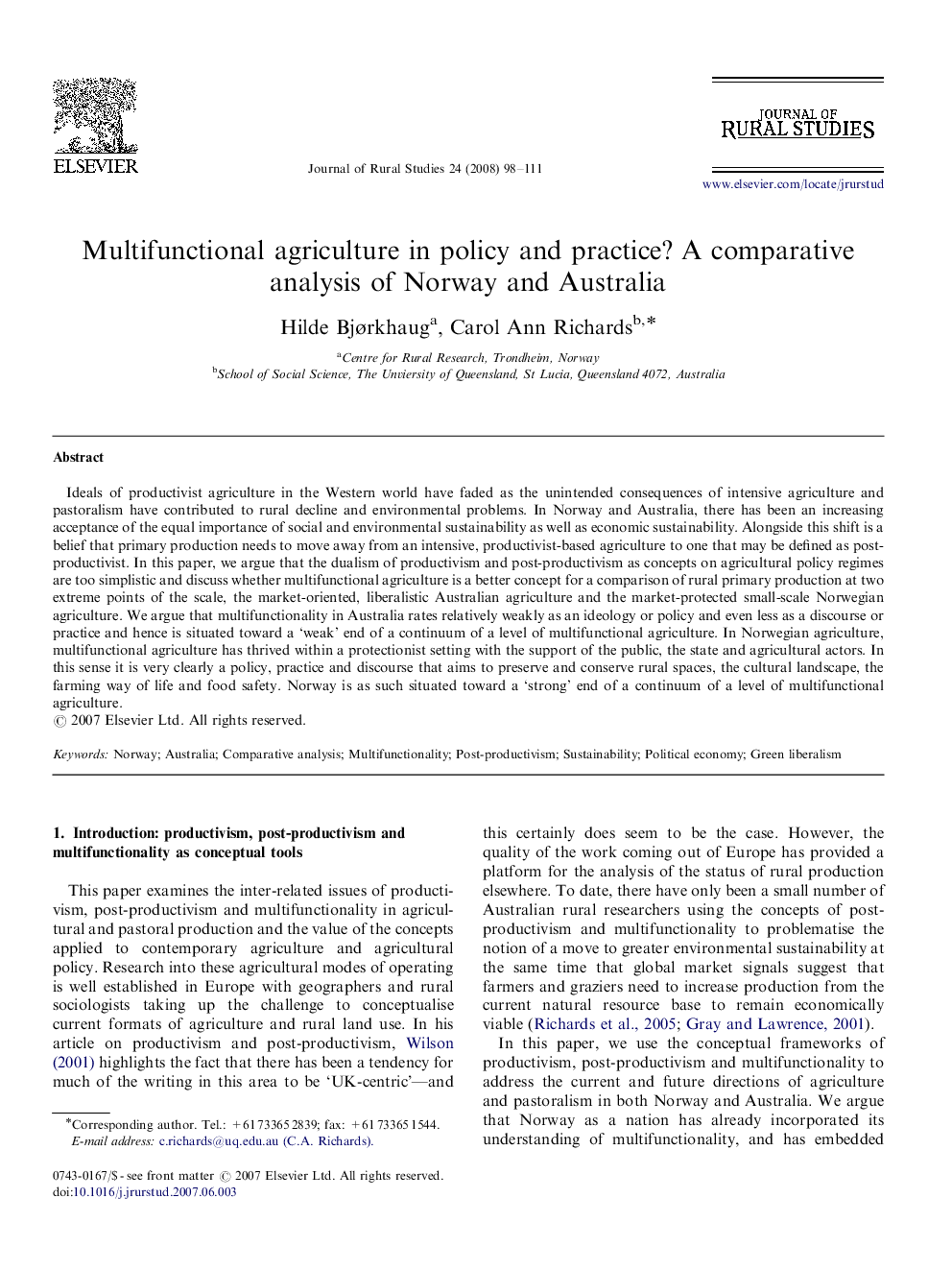| Article ID | Journal | Published Year | Pages | File Type |
|---|---|---|---|---|
| 92793 | Journal of Rural Studies | 2008 | 14 Pages |
Ideals of productivist agriculture in the Western world have faded as the unintended consequences of intensive agriculture and pastoralism have contributed to rural decline and environmental problems. In Norway and Australia, there has been an increasing acceptance of the equal importance of social and environmental sustainability as well as economic sustainability. Alongside this shift is a belief that primary production needs to move away from an intensive, productivist-based agriculture to one that may be defined as post-productivist. In this paper, we argue that the dualism of productivism and post-productivism as concepts on agricultural policy regimes are too simplistic and discuss whether multifunctional agriculture is a better concept for a comparison of rural primary production at two extreme points of the scale, the market-oriented, liberalistic Australian agriculture and the market-protected small-scale Norwegian agriculture. We argue that multifunctionality in Australia rates relatively weakly as an ideology or policy and even less as a discourse or practice and hence is situated toward a ‘weak’ end of a continuum of a level of multifunctional agriculture. In Norwegian agriculture, multifunctional agriculture has thrived within a protectionist setting with the support of the public, the state and agricultural actors. In this sense it is very clearly a policy, practice and discourse that aims to preserve and conserve rural spaces, the cultural landscape, the farming way of life and food safety. Norway is as such situated toward a ‘strong’ end of a continuum of a level of multifunctional agriculture.
